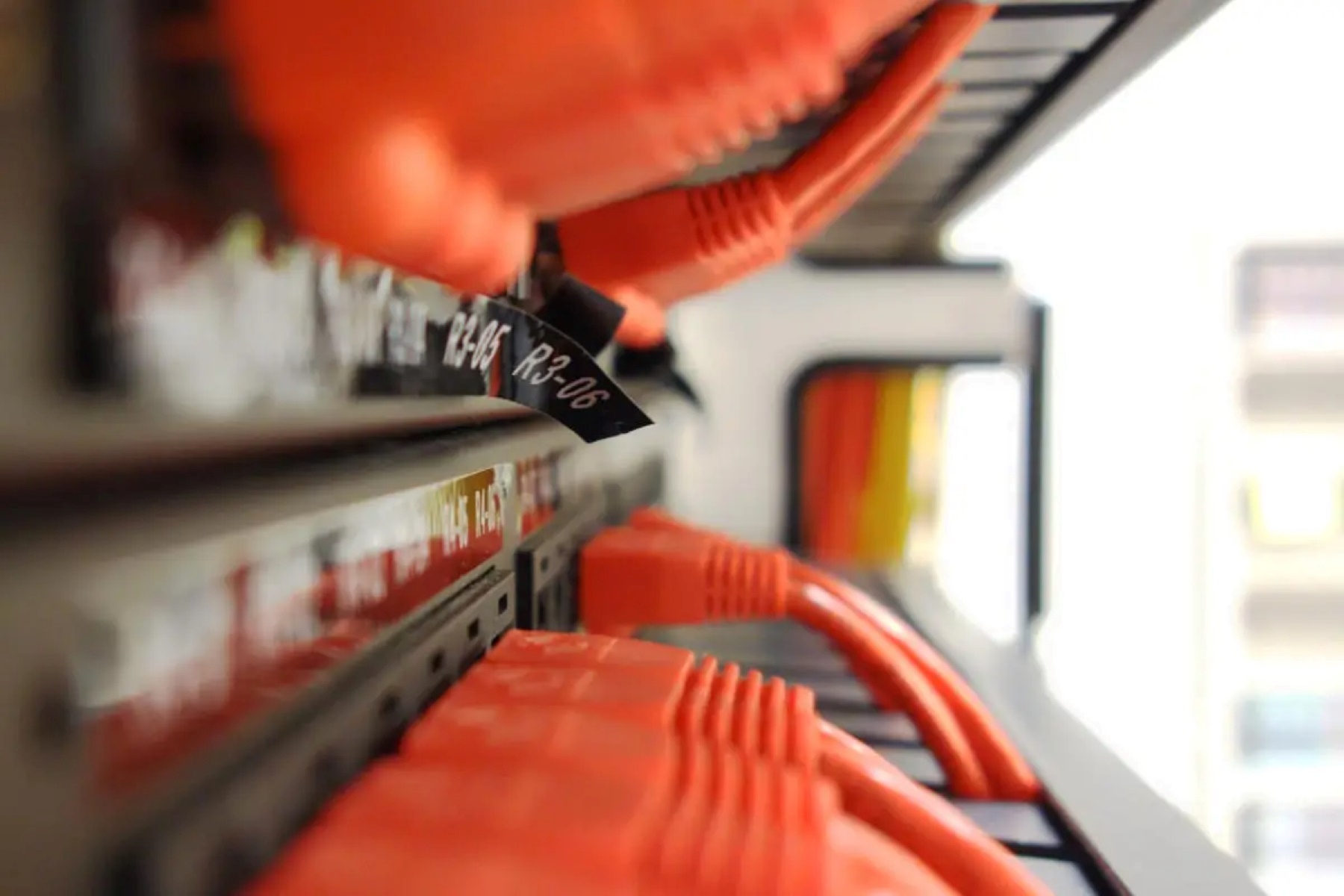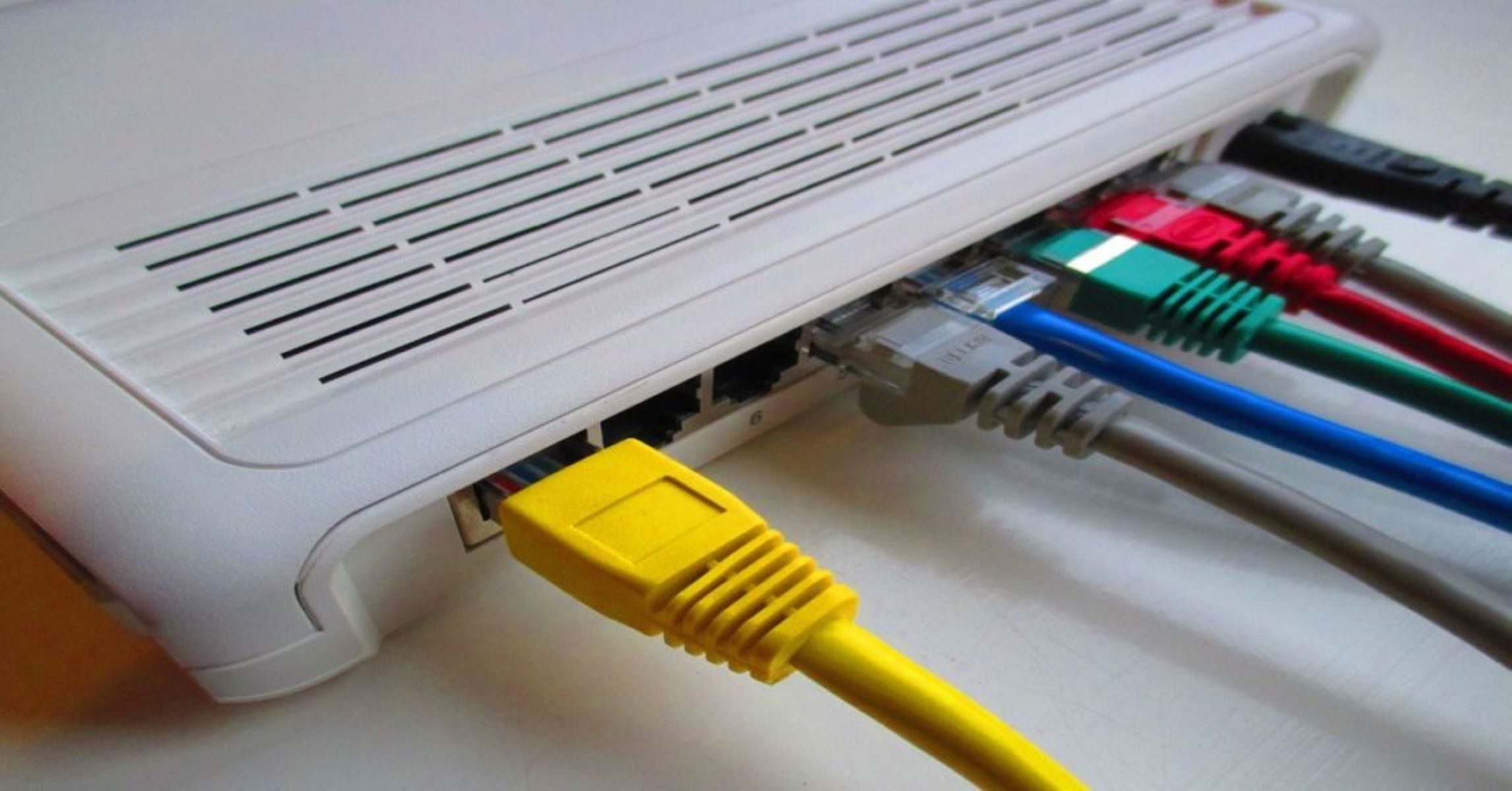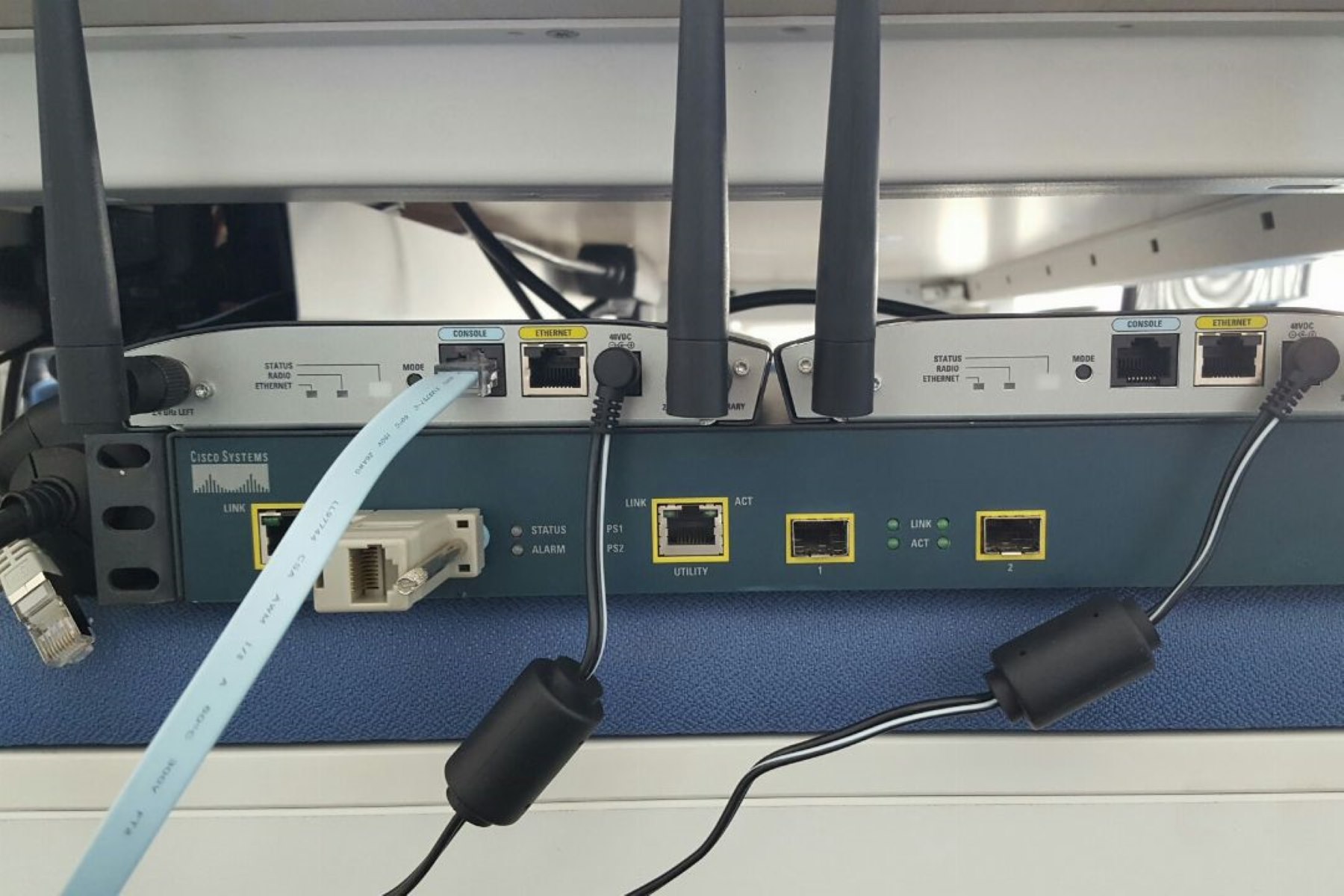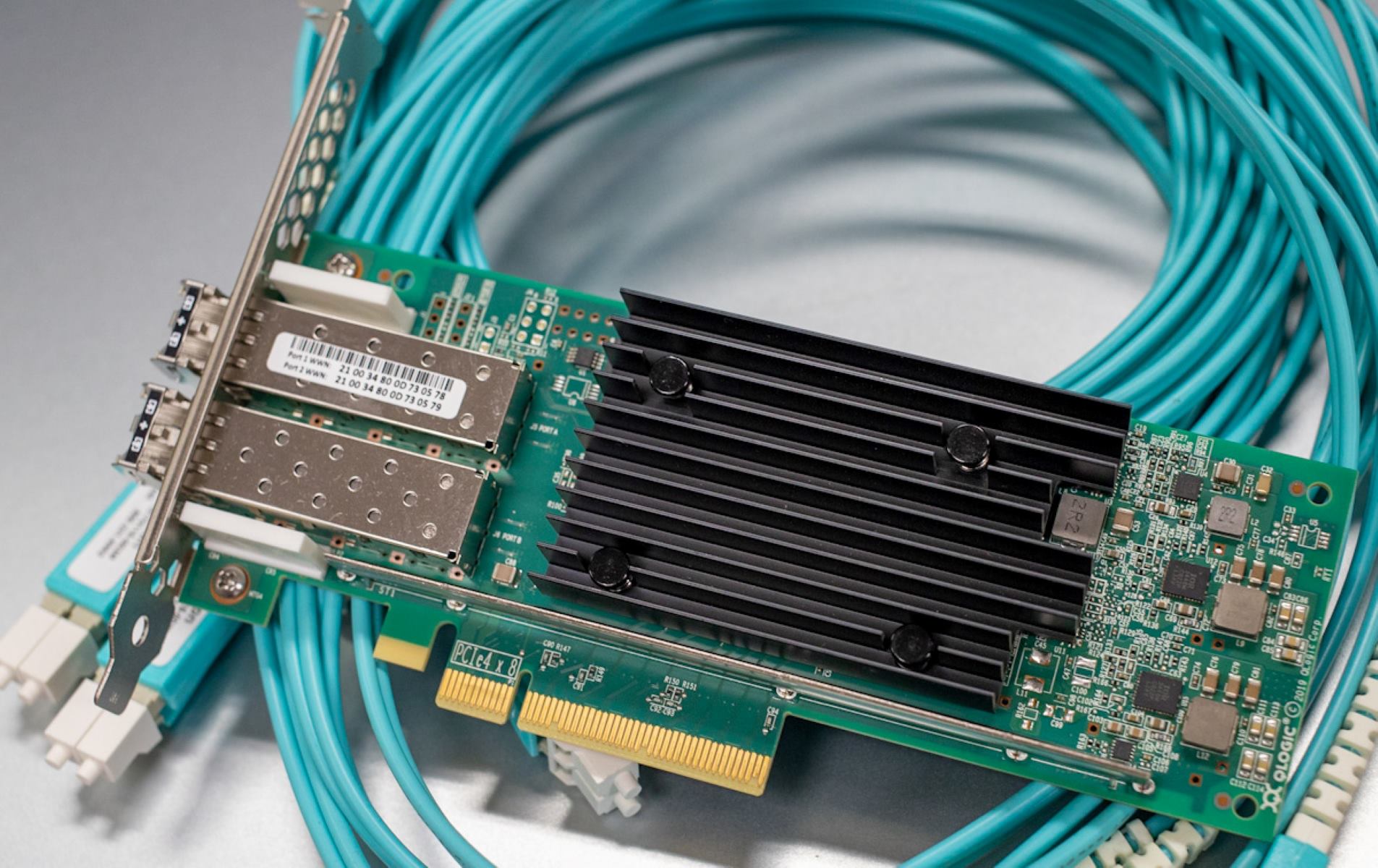Introduction
Ethernet is a widely used networking technology that allows devices to communicate with each other over a local area network (LAN). It is the foundation of modern networking and has revolutionized the way we connect and share data. Understanding the fundamental components of Ethernet is essential for anyone working in the field of networking or for those who simply want to better understand how their internet connection works.
An Ethernet frame plays a critical role in data transmission within a network. It contains important information that enables devices to send and receive data packets effectively and efficiently. By understanding the structure and components of an Ethernet frame, we can gain insight into the inner workings of networking and how data flows across networks.
This article will provide a comprehensive overview of Ethernet frames, including their structure, fields, types, size, and transmission. Whether you’re a seasoned network administrator or a curious individual seeking to expand your knowledge, this article will equip you with the necessary information to understand and appreciate Ethernet frames.
So, let’s dive into the world of Ethernet frames and uncover the mysteries of this fundamental networking concept!
What is Ethernet Frame?
An Ethernet frame is a fundamental unit of data transmission in Ethernet networks. It serves as a container that encapsulates data packets, allowing them to be transmitted from one device to another in a network. In simple terms, an Ethernet frame is like a package that holds the information to be delivered to its intended destination.
The Ethernet frame effectively organizes and structures data for efficient transmission and reception. It includes a header, payload, and trailer, each serving a specific purpose in the data transmission process. The header contains necessary information for routing and error detection, while the payload holds the actual data to be transmitted. The trailer contains error checking information to ensure the integrity of the data during transmission.
Ethernet frames are used in most wired Ethernet networks, providing a reliable and standardized method for data exchange. The use of Ethernet frames allows for efficient communication between devices in a network, regardless of the operating systems or protocols they may use.
Additionally, Ethernet frames support various types of data, such as internet protocol (IP) packets, transmission control protocol (TCP) segments, user datagram protocol (UDP) datagrams, and more. This versatility makes Ethernet frames suitable for a wide range of applications and enables seamless connectivity across different network devices.
Overall, the Ethernet frame forms the backbone of data transmission in Ethernet networks. It provides a standardized and efficient way to package and transmit data, enabling devices to communicate with each other and exchange information reliably.
Structure of Ethernet Frame
The Ethernet frame follows a specific structure that ensures efficient communication and error handling within a network. Understanding the structure of an Ethernet frame is crucial to comprehending how data is transmitted and received in Ethernet networks.
The Ethernet frame consists of three main components: the header, the payload, and the trailer. Let’s take a closer look at each of these components:
1. Ethernet Frame Header: The header is located at the beginning of the Ethernet frame and contains essential information for routing and error detection. It includes fields such as the destination MAC address, source MAC address, and EtherType/Length field. The destination MAC address indicates the intended recipient of the frame, while the source MAC address identifies the sender. The EtherType or Length field specifies the type of data encapsulated in the payload.
2. Ethernet Frame Payload: The payload carries the actual data to be transmitted across the network. It can contain various types of data, including IP packets, TCP segments, UDP datagrams, or any other type of application data. The size of the payload can vary depending on the data being transmitted, with a maximum size of 1500 bytes for standard Ethernet frames.
3. Ethernet Frame Trailer: The trailer is located at the end of the Ethernet frame and is responsible for error detection. It typically contains a cyclic redundancy check (CRC) value, which is calculated based on the contents of the header and payload. The receiving device uses this CRC value to verify the integrity of the received frame. If any errors are detected, the frame is discarded to prevent corrupted data from spreading across the network.
The structure of the Ethernet frame ensures that data is accurately routed and delivered to the intended recipient. The header provides necessary information for proper addressing, while the trailer enables error detection, ensuring data integrity.
By understanding the structure of the Ethernet frame, network administrators and technicians can troubleshoot and diagnose networking issues more effectively. It also allows for the development of compatible networking devices that adhere to the standard Ethernet frame structure.
In the next section, we will explore the different fields within the Ethernet frame header and understand their significance in the data transmission process.
Ethernet Frame Fields
The Ethernet frame header contains several fields that carry important information for routing, addressing, and error detection within the Ethernet network. These fields play a crucial role in the successful transmission and reception of data packets. Let’s explore some of the key fields commonly found in an Ethernet frame header:
1. Destination MAC Address: This field specifies the MAC address of the intended recipient device. It identifies the device to which the Ethernet frame should be delivered. The destination MAC address is essential for proper routing within the network.
2. Source MAC Address: This field indicates the MAC address of the sending device. It identifies the device that originated the Ethernet frame. The source MAC address is crucial for devices to identify and respond to the sender.
3. EtherType/Length: The EtherType field specifies the type of data carried in the payload of the Ethernet frame. It helps the receiving device determine how to handle the incoming data. Alternatively, the Length field specifies the length of the data in the payload when the Ethernet frame is using the IEEE 802.3 Length/Type field format.
4. VLAN Tag: The VLAN (Virtual Local Area Network) Tag field is an optional field that is used to indicate VLAN membership for tagged Ethernet frames. It allows for network segmentation and enhances network efficiency by isolating traffic within specific VLANs.
5. Frame Check Sequence (FCS): The FCS field is located in the trailer of the Ethernet frame and is responsible for error detection. It contains a checksum or cyclic redundancy check (CRC) value that is calculated based on the contents of the header and payload. The receiving device uses this value to verify the integrity of the received frame and detect any transmission errors.
These fields, among others, provide vital information for proper communication and error handling within Ethernet networks. They ensure that the data is correctly addressed, routed, and verified during transmission. By understanding these Ethernet frame fields, network administrators can effectively configure and troubleshoot network devices to ensure optimal performance.
Now that we have explored the Ethernet frame fields, let’s delve deeper into the Ethernet frame header and understand its significance in the data transmission process.
Ethernet Frame Header
The Ethernet frame header is the initial part of the Ethernet frame and contains crucial information for proper data transmission and addressing within the Ethernet network. It consists of various fields that provide essential details for routing, identifying the source and destination devices, and specifying the type of data being transmitted. Understanding the Ethernet frame header is vital for comprehending the inner workings of Ethernet networks. Here are the key fields typically found in an Ethernet frame header:
1. Destination MAC Address: This field identifies the MAC address of the intended recipient device. The destination MAC address serves as the target address for the Ethernet frame, ensuring that the data is delivered to the correct destination.
2. Source MAC Address: This field contains the MAC address of the sending device. It identifies the source device that originated the Ethernet frame and helps the recipient device identify the sender.
3. EtherType/Length: The EtherType field specifies the type of data carried in the payload of the Ethernet frame. It allows the receiving device to determine how to handle the incoming data. Alternatively, in the IEEE 802.3 Length/Type field format, the Length field indicates the length of the data in the payload.
4. VLAN Tag: The VLAN Tag field is an optional field used to indicate VLAN membership for tagged Ethernet frames. It facilitates network segmentation and enhances network efficiency by segregating traffic within specific VLANs.
5. Frame Check Sequence (FCS): This field is located in the trailer of the Ethernet frame but is closely associated with the Ethernet frame header. It contains a checksum or cyclic redundancy check (CRC) value calculated based on the contents of the header and payload. The FCS field enables the receiving device to verify the integrity of the Ethernet frame and detect any transmission errors.
By examining the Ethernet frame header fields, devices in an Ethernet network can efficiently route and transmit data packets to the intended destination. Proper addressing ensures that the data reaches the correct device, while the EtherType/Length field allows for appropriate handling of incoming data. The inclusion of VLAN Tags provides segmentation capabilities, and the FCS field enables error detection.
Understanding the Ethernet frame header enables network administrators to troubleshoot network issues, configure network devices correctly, and ensure seamless data transmission across Ethernet networks.
In the next section, we will explore the payload of the Ethernet frame and its significance in carrying the actual data being transmitted.
Ethernet Frame Payload
The Ethernet frame payload is a crucial component of the Ethernet frame that carries the actual data to be transmitted across an Ethernet network. It is the container for the information, messages, or packets that are being exchanged between devices. Understanding the Ethernet frame payload is essential to comprehend the type, format, and content of the data being transmitted. Let’s explore the significance of the Ethernet frame payload:
The payload of an Ethernet frame contains various types of data, such as IP packets, TCP segments, UDP datagrams, or any other application-specific data. It can encapsulate information from higher-level protocols, allowing for seamless communication between devices in a network. The payload size can vary depending on the size of the data being transmitted, with a maximum size of 1500 bytes for standard Ethernet frames.
The Ethernet frame payload serves as the carrier of information, enabling devices to exchange critical data for various purposes. For example, in an IP-based network, the payload may contain IP packets that carry information such as source and destination IP addresses, protocol information, and the actual data that needs to be delivered to the target device.
The payload’s content and format depend on the specific protocols, applications, or services being utilized in the network. For instance, in a VoIP (Voice over IP) application, the payload might include encoded voice data that needs to be transmitted between devices. In a video streaming scenario, the payload would carry video frames, audio data, and associated metadata required for smooth playback.
The Ethernet frame payload is designed to be flexible, accommodating various types of data and protocols. This flexibility makes Ethernet a versatile and widely adopted networking technology, capable of supporting diverse communication needs. It paves the way for seamless integration of different services and applications over an Ethernet network.
It’s important to note that the Ethernet frame payload does not interpret or modify the data it carries. It simply provides a means for transmitting the data from the source device to the destination device within the Ethernet network.
Understanding the Ethernet frame payload allows network administrators to analyze network traffic, troubleshoot connectivity issues, and optimize network performance. By examining the payload, they can gain insights into the type of data being transmitted and ensure that it conforms to the desired standards and protocols.
Now that we’ve explored the Ethernet frame payload, let’s move on to understanding the Ethernet frame trailer and its role in ensuring data integrity.
Ethernet Frame Trailer
The Ethernet frame trailer is the final component of an Ethernet frame, located after the payload. It serves a critical role in ensuring the integrity of the data being transmitted across the Ethernet network. The Ethernet frame trailer contains error checking information that allows receiving devices to detect and handle transmission errors. Let’s explore the significance of the Ethernet frame trailer:
The primary purpose of the Ethernet frame trailer is to provide error detection. Within the trailer, there is a field called the Frame Check Sequence (FCS) or cyclic redundancy check (CRC) value. This value is generated based on the contents of the Ethernet frame header and payload. It acts as a checksum, allowing the receiving device to verify the accuracy of the received frame.
When an Ethernet frame is received, the receiving device recalculates the FCS value based on the received data. It then compares the recalculated FCS value to the FCS value in the Ethernet frame trailer. If the two values match, it indicates that the frame was transmitted successfully without any errors. However, if the values do not match, it suggests that the frame has experienced transmission errors and may need to be discarded.
The Ethernet frame trailer plays a crucial role in maintaining data integrity by detecting transmission errors caused by noise, interference, or equipment malfunctions. It helps ensure that the transmitted data arrives at the receiving device exactly as it was sent.
It’s worth noting that the Ethernet frame trailer is not involved in the error correction process. Its main purpose is to enable the detection of errors, not their correction. If an error is detected, it is the responsibility of higher-level protocols or mechanisms to handle error recovery.
The inclusion of the Ethernet frame trailer allows for more reliable data transmission, minimizing the risk of corrupted or distorted data reaching the intended recipient. It helps maintain the overall integrity of the networking process and contributes to the accuracy and quality of data exchanges across Ethernet networks.
Understanding the significance of the Ethernet frame trailer allows network administrators to diagnose and troubleshoot network issues related to data integrity. They can identify potential problems, such as high error rates or faulty network equipment, and take appropriate measures to ensure optimal data transmission.
Now that we have explored the Ethernet frame trailer, let’s move on to understanding the different types of Ethernet frames and their specific characteristics.
Ethernet Frame Types
Ethernet supports various frame types, each designed for specific purposes based on the networking requirements. Different frame types allow for the transmission of different types of data and provide flexibility in terms of network configuration and compatibility. Let’s explore some of the common Ethernet frame types:
1. Ethernet II: Also known as Ethernet Version 2 or Ethernet DIX, Ethernet II is the most widely used Ethernet frame type today. It features a simple and straightforward structure, including a 14-byte header and a variable-length payload. Ethernet II frames use EtherType to specify the type of protocol encapsulated within the payload, allowing for seamless interoperability between devices.
2. IEEE 802.3 Ethernet: This frame type follows the IEEE 802.3 standard and is commonly used in Ethernet networks. It includes a 14-byte header, similar to Ethernet II, but uses the Length/Type field instead of the EtherType field to indicate the length of the payload or specify the type of protocol being used. The IEEE 802.3 Ethernet frame can be further classified into different subtypes based on the specific Ethernet standard in use, such as 10BASE-T or 100BASE-TX.
3. IEEE 802.1Q VLAN: VLAN frames are used to support Virtual Local Area Networks (VLANs) within Ethernet networks. They include an additional 4-byte VLAN Tag field in the Ethernet header, allowing for network segmentation and enhancing traffic management and security. The VLAN Tag field indicates the VLAN ID and priority, enabling devices to correctly handle VLAN traffic within a network.
4. Ethernet SNAP: Sub-Network Access Protocol (SNAP) frames are an extension of Ethernet II frames that allow for the encapsulation of protocols beyond the range of the EtherType field. SNAP adds an additional 8-byte header after the Ethernet II header to specify the organizationally unique identifier (OUI) and protocol ID. This enables the transmission of various network-layer protocols within Ethernet frames.
5. Other Ethernet Frame Types: Besides the common frame types mentioned above, there are additional Ethernet frame types tailored for specific purposes, such as Ethernet frames used in industrial automation (e.g., Profinet, EtherNet/IP) or multimedia applications (e.g., Audio Video Bridging [AVB] frames). These frame types cater to the specific needs of these specialized domains.
The availability of different Ethernet frame types allows for versatility and compatibility within Ethernet networks. Each frame type serves a specific purpose and enables the transmission of data according to different protocols or application requirements. Network administrators must choose the appropriate frame type based on the intended use and the compatibility of the devices involved.
Understanding the various Ethernet frame types allows network administrators to configure and manage their networks effectively. It promotes seamless communication between devices, enhances network performance, and ensures optimal compatibility across different Ethernet-enabled devices.
Now that we have explored Ethernet frame types, let’s continue by examining the concept of Ethernet frame size and its significance in network performance.
Ethernet Frame Size
Ethernet frame size refers to the total size of an Ethernet frame, including the header, payload, and trailer. It plays a crucial role in network performance, as the frame size can impact the efficiency of data transmission and network utilization. Let’s explore the significance of Ethernet frame size:
The standard Ethernet frame size for most Ethernet networks is typically 1518 bytes, which consists of a 14-byte Ethernet header, a 1500-byte payload, and a 4-byte Ethernet frame trailer. This size is known as the Maximum Transmission Unit (MTU) for Ethernet. However, it’s important to note that the actual payload size can be smaller than 1500 bytes when considering additional protocol headers.
The Ethernet frame size directly impacts network performance and efficiency. Larger frame sizes allow for more data to be transmitted in each frame, reducing the overhead caused by header information. This leads to improved network throughput and increased efficiency in utilizing available bandwidth.
On the other hand, smaller frame sizes may result in higher overhead due to the relatively larger proportion of header information compared to the payload. This can lead to reduced network efficiency and slower data transmission rates, as the same amount of information is split into more frames.
Adjusting the Ethernet frame size can be crucial in optimizing network performance for specific applications or network environments. For example, jumbo frames or frames exceeding the standard MTU can be used in certain scenarios, such as storage area networks (SANs) or high-performance computing (HPC) environments. These larger frame sizes can increase data transmission efficiency and reduce latency by reducing the number of frames transmitted.
However, it’s important to ensure that all devices in the network support and are configured to handle the larger frame sizes. The use of jumbo frames requires compatibility and proper configuration across all network devices, including switches, routers, and network interface cards (NICs).
It’s worth noting that the Ethernet frame size can also impact network latency. In general, larger frame sizes result in lower overhead and improved efficiency, thus reducing overall latency. However, there may be cases where smaller frame sizes are preferred, such as in real-time communication applications where low latency is critical.
Ultimately, the choice of Ethernet frame size depends on the specific requirements and characteristics of the network. Network administrators must consider factors such as the types of applications, the network environment, and the capabilities of the network infrastructure when determining the optimal frame size.
Understanding the significance of Ethernet frame size allows network administrators to fine-tune network configurations and achieve optimal network performance. By adjusting the frame size to suit the specific requirements of the network, they can ensure efficient data transmission and smooth network operations.
Now that we have explored Ethernet frame size, let’s move on to understanding how Ethernet frames are transmitted within a network.
Ethernet Frame Transmission
Ethernet frame transmission refers to the process of sending and receiving Ethernet frames within an Ethernet network. It involves several steps and mechanisms to ensure accurate and reliable data transmission between devices. Let’s explore the key aspects of Ethernet frame transmission:
1. Encapsulation: The process of encapsulation involves placing data from higher-level protocols into the payload of an Ethernet frame. The payload contains the actual data to be transmitted, such as IP packets, TCP segments, or other application-specific data. The data is encapsulated within the Ethernet frame to allow for seamless transmission across the Ethernet network.
2. Source and Destination Addressing: Before transmission, each Ethernet frame is assigned a source MAC address and a destination MAC address. The source MAC address identifies the device originating the frame, while the destination MAC address specifies the intended recipient. This addressing ensures that the frame is routed correctly within the network.
3. Frame Transmission: Once the Ethernet frame is constructed, it is transmitted onto the network medium or the physical media, such as copper or fiber optic cables. The frame is then propagated across the network to reach the intended destination device. Ethernet utilizes various modulation and coding techniques to transmit the electrical or optical signals carrying the frame data.
4. Collision Detection: Ethernet uses a mechanism called Carrier Sense Multiple Access with Collision Detection (CSMA/CD) to detect and handle collisions that may occur during transmission. If two devices attempt to transmit at the same time and a collision is detected, both devices wait for a random period before retransmitting their frames. This collision detection mechanism helps manage the flow of traffic and prevent data corruption caused by simultaneous transmissions.
5. Frame Reception and Filtering: Upon receiving an Ethernet frame, the recipient device checks the destination MAC address in the frame header to determine if it is the intended recipient. If the MAC address matches, the frame is accepted and processed. If not, the frame is discarded. This filtering mechanism ensures that frames are delivered only to the appropriate devices, reducing overhead and network congestion.
6. Error Detection and Handling: The Ethernet frame trailer contains error checking information, such as the Frame Check Sequence (FCS) or cyclic redundancy check (CRC). The receiving device uses this information to verify the integrity of the received frame. If errors are detected, such as data corruption or transmission issues, the frame may be discarded to prevent the propagation of erroneous data across the network.
Ethernet frame transmission relies on the coordination and cooperation of devices within the network. By adhering to the Ethernet protocol and the mechanisms described above, devices can effectively transmit and receive frames, ensuring accurate and reliable data communication.
Understanding the process of Ethernet frame transmission allows network administrators to troubleshoot network issues, optimize network performance, and ensure seamless communication between devices within the Ethernet network.
Now that we have explored Ethernet frame transmission, let’s conclude the article by summarizing the key points discussed throughout.
Conclusion
In conclusion, Ethernet frames are the building blocks of Ethernet networks. They enable devices to communicate and exchange data efficiently and reliably. Understanding the different aspects of Ethernet frames, from their structure and fields to their transmission and size, is essential for network administrators, technicians, and anyone interested in the field of networking.
We explored the structure of an Ethernet frame, consisting of the header, payload, and trailer. The header contains important information such as MAC addresses, EtherType/Length, and VLAN tags. The payload carries the actual data being transmitted, and the trailer ensures data integrity through error detection using the FCS field.
There are various Ethernet frame types that cater to specific networking needs, such as Ethernet II, IEEE 802.3 Ethernet, VLAN frames, and Ethernet SNAP frames. Each frame type offers different features and advantages, allowing for versatility and compatibility within Ethernet networks.
Ethernet frame size plays a crucial role in network performance, with larger frame sizes leading to improved efficiency by reducing overhead, while smaller frame sizes can be advantageous in low-latency applications.
We also explored the process of Ethernet frame transmission, including encapsulation, addressing, collision detection, reception and filtering, and error detection and handling. Each step contributes to successful data transmission and reliable communication between devices within the Ethernet network.
By understanding the concepts and components of Ethernet frames, network administrators can effectively troubleshoot network issues, optimize network performance, and ensure smooth data transmission. Whether it’s configuring network devices, analyzing network traffic, or addressing connectivity problems, a solid understanding of Ethernet frames is fundamental in maintaining a robust and efficient Ethernet network.
We hope this article has provided you with valuable insights into the world of Ethernet frames. As technology advances and networking capabilities evolve, Ethernet frames will continue to play a vital role in facilitating seamless communication and data exchange in our interconnected world.

























